INTRODUCTION
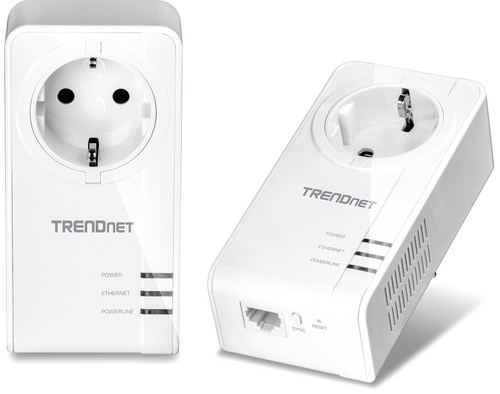
Thanks to its wide use in homes, offices, cafeterias, hotels, restaurants and pretty much every business out there wireless connectivity has become part of our daily lives so its really understandable that people don't look past it. Personally I’ve mentioned many times in the past that although i do consider Wi-Fi to be extremely useful when not at home or at the office (even in those places when it comes to smartphones and tablets) i always prefer to use wired connections when available to enjoy increased performance and security levels. This is also why i don't understand why powerline adapters haven't "earned" a spot in most homes and offices yet since in most cases they offer better connection speeds and are far more stable compared to Wi-Fi. Still recent numbers do show that powerline adapters have increased in popularity so it only makes sense that we keep testing all the latest models and so today with us we have the brand new TPL-421E2K Powerline 1200 AV2 Adapter Kit by TRENDnet.
Founded in Torrance, California, TRENDnet has grown to become a leading global networking hardware brand. From the network core to the periphery, TRENDnet's expansive product portfolio includes Wireless, Wired, Surveillance, Connectivity, and Peripheral device categories. An emphasis on continual improvement and our ISO 9001:2008 quality management certification (click here to view certificate) is an essential component of TRENDnet’s success. The TRENDnet brand is consistently recognized for exceptional quality, superior performance, and responsive support. TRENDnet's vision is to build innovative, easy to use, and reliable Networks People Trust™. TRENDnet solutions network the countless devices which enable your connected lifestyle and workplace. Building award winning networking solutions since 1990, TRENDnet connects you with what you value most.
Just like the Devolo DLAN1200+ the TPL-421E2K is yet another HomePlug AV2 compatible powerline adapter kit capable of data transfer speeds of up to 1200Mbps (in reality the built-in RJ45 Gigabit Ethernet Port only supports 1000Mbps max) by using the local electrical wiring. The adapters also feature a built-in electrical socket/outlet (type depends on the region), MIMO with beamforming (supported products use all three wires of the power cable for data transmission), power save feature (reduces consumption up to 80%), noise filter (for more stable signal) and 128-Bit AES encryption. Once again this is "typical" powerline adapter set in the sense that it doesn't feature Wi-Fi connectivity but since i have to admit that wired performance is what we look mostly when testing such devices that's exactly what we're about to check.
SPECIFICATIONS AND FEATURES

PACKAGING AND CONTENTS
The adapters arrived inside a small box that has a picture of them at the front right over several smaller drawings showcasing their main features.
Both the features and bundle contents are printed on the left side.
A connectivity drawing is placed at the rear of the box right beneath a quick comparison between a 500/600Mbps and a 1200Mbps adapter.
Both adapters are wrapped inside small plastic bags and placed inside a formed piece of cardboard.
Along with the two 1200Mbps adapters TRENDnet also ships two 1.5 meter long RJ-45 Ethernet cables, user manual and a software CD.
THE TPL-421E2K
Size-wise the TPL-421E adapter is roughly the same as many others with a built-in power socket (123mm in height, 75mm in width and 61mm in thickness).
Each adapter has three long activity LEDs at the front corresponding to power (on/off), Ethernet connectivity and powerline connection.
It was good to see that the built-in electrical socket has integrated child safety protection.
At the base of the adapters we see the RJ-45 Ethernet port, sync button (connects adapters together) and a reset switch.
Contact information for TRENDnet can be found on a sticker placed at the rear of the adapters (the product serial number and barcode are also present).
POWER PACKET UTILITY
You can download firmware updates and TRENDnet’s power packet utility from their support page.
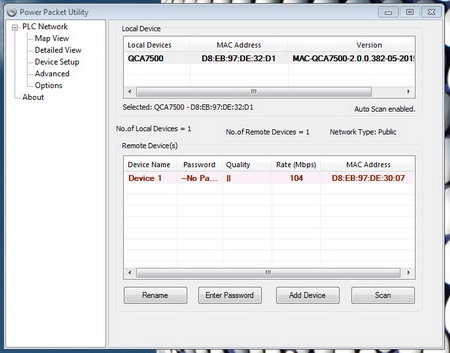
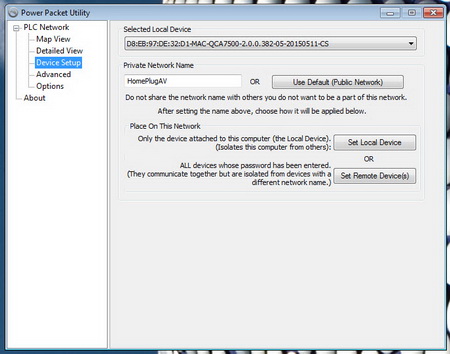
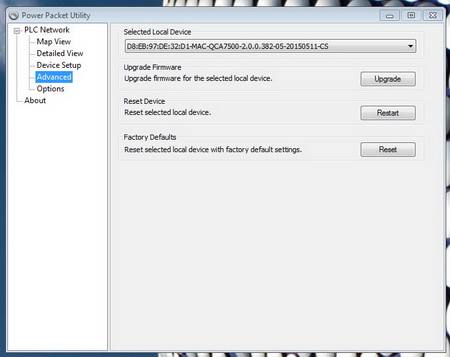
The Power Packet Utility is nothing fancy but it allows you to check the available adapters and their current connection speed and you can also add more adapters, change the adapter password and even perform firmware upgrades.
TESTING METHODOLOGY
As already mentioned plenty of times in the past the performance of Powerline adapters is directly linked to the quality of the buildings electrical grid/wiring so the output speeds from such devices will most probably vary between new and old structures. Still the results recorded when testing Powerline adapters inside the same building should easily point out the best one and so to that end we used the well-known Passmark Performance Test to measure the data transfer rate in wired, wireless and Powerline modes with a fixed (for every test) distance of 15 meters between our Netgear D6300 Gigabit modem/router (we changed from the DGN3500 since after 20 tests we saw no difference in performance with the D6300 between the powerline adapters we have here) and the primary and secondary systems (30m in total between both systems / we make use of CAT7 cables for wired tests). For Wi-Fi capable powerline adapters we left the secondary adapter at the same spot as with the other tests and used it with an 802.11 a/b/g/n/ac compatible Toshiba Qosmio Laptop placed roughly 5 meters away.
The network data transfer test was set to duration of 40 seconds and was repeated a total of 7 times after which the average numbers were recorded into our charts. As a secondary test we are also using QCheck by Ixia which is considered amongst the top measuring tools of its kind. Tests are performed 7 times at throughput mode with a data size of 1000Kb and in the end the average numbers once again get recorded into our charts. As of February 2015 we also record ATTO results in our charts (256MB total length) after 7 repeats.
TEST RESULTS
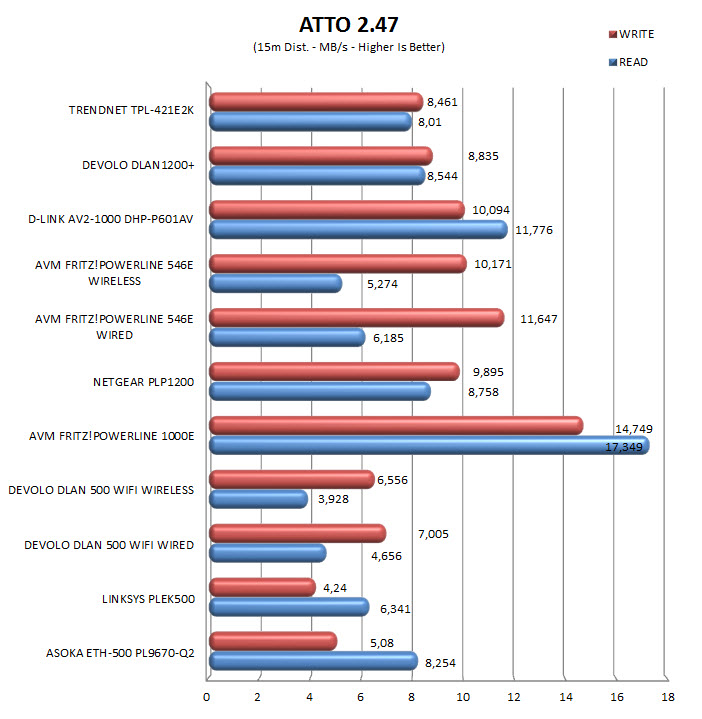
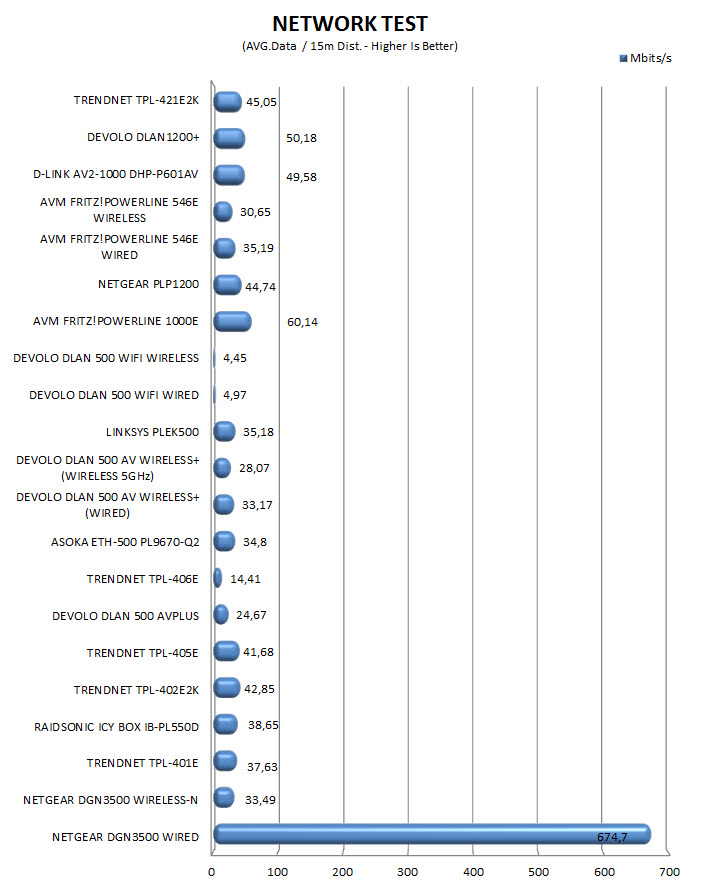
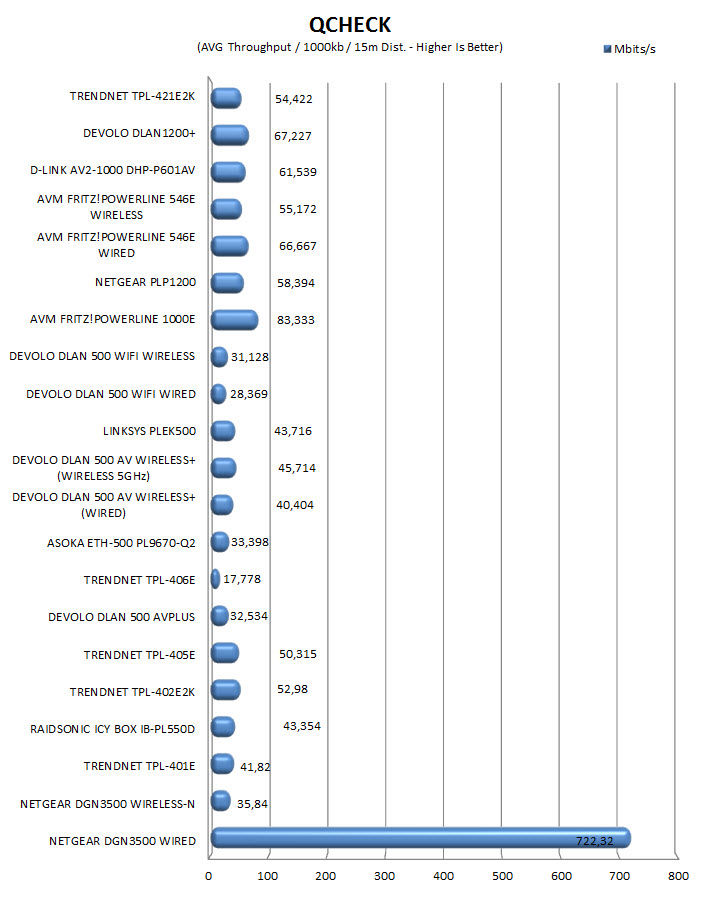
CONCLUSION
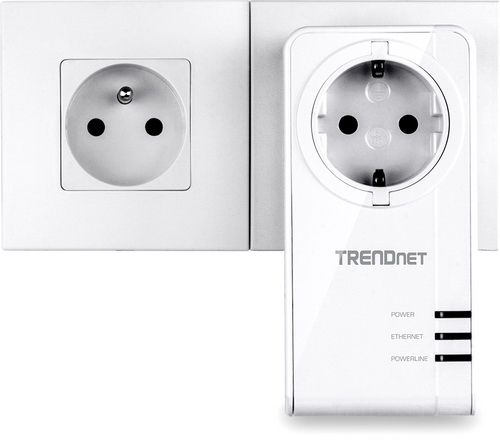
In a market filled with Wi-Fi capable powerline adapters one would think we’d consider that to be a drawback but we really don’t especially since you can buy a Wi-Fi compatible adapter from any manufacturer (as long as it’s HomePlug AV2 compatible) and use it with this or any other kit. The only slight issue we had is with wired performance and although the gap with several other similar 1000/1200Mbps adapters was far from great the TPL-421E2K finished 4th in our charts. The TPL-421E adapters have however something that others don’t, very large activity LEDs and although that may seem funny to some of you still they are far easier to spot from afar (and thus understand the current state of the adapter) and also look much better (not that appearance is something important for powerline adapters). I would of course like to see a better control panel than the Power Packet Utility (it just feels outdated) so I do hope TRENDnet listens and releases something designed at least on par with what AVM offers (Devolo also has a nice control panel but there’s really no need for them to go that far).
With a current price tag set at USD84.99 inside the USA (Amazon.com) and 95Euros inside the EU (Amazon.co.uk) the most direct contestant to the TPL-421E2K is the PLP-1200 kit by Netgear. Of course as you can see from our charts both kits trade blows (the PLP-1200 is slightly faster in 2 out of 3 tests) so it’s certainly not a deal breaker. In the end if you have no need for the built-in power socket we still recommend going for the D-Link AV2-1000 kit since it costs almost half as much and is still king with an excellent price/performance ratio. Overall the TPL-421E2K is a solid powerline kit with very good performance levels (just not top) and a good set of features which is why it gets our Golden Award.

PROS
- Build Quality
- 4th Fastest Powerline Adapter To Date (In Our Charts)
- 1200Mbit/s (1000Mbit/s Effective)
- Built-In Electrical Socket
- Low Power Consumption (PowerSave Mode)
- AES 128-Bit Encryption
- Large Activity LEDs
CONS
- Single LAN Port (For Some)
- Control Software (Outdated)

 O-Sense
O-Sense






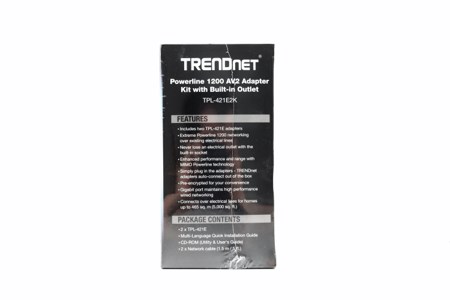
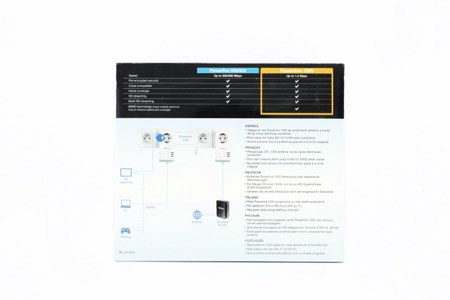
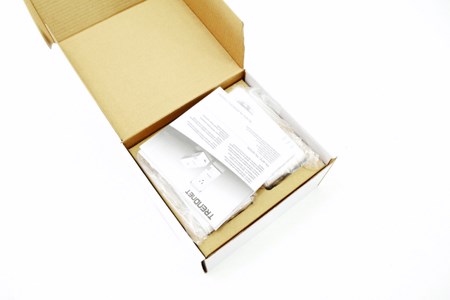
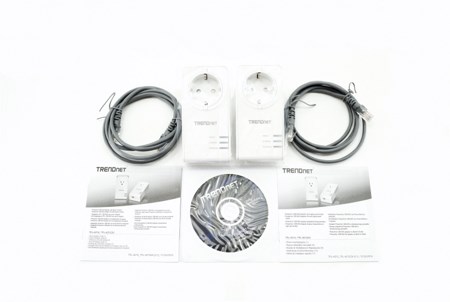
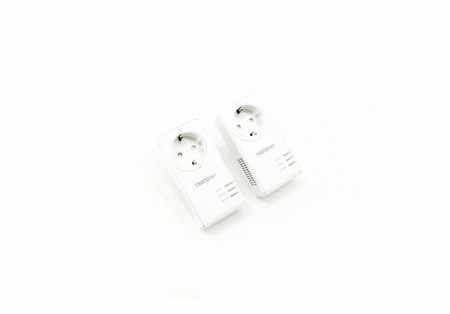
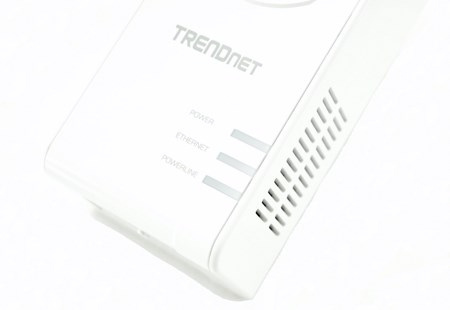
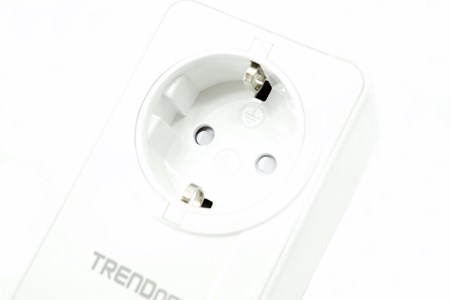
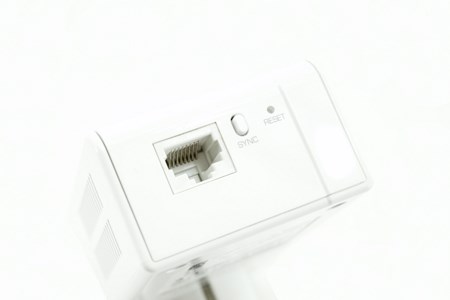
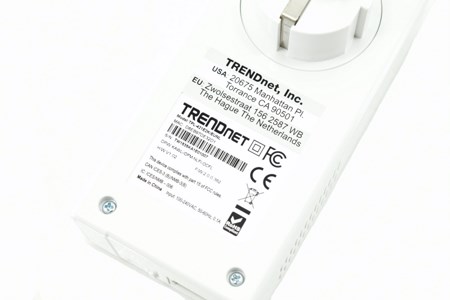
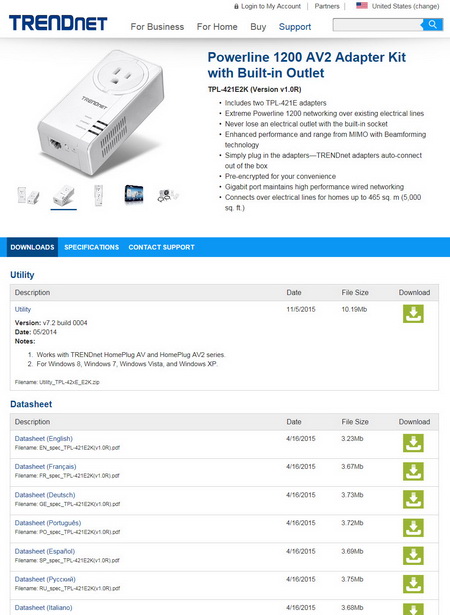


.png)

